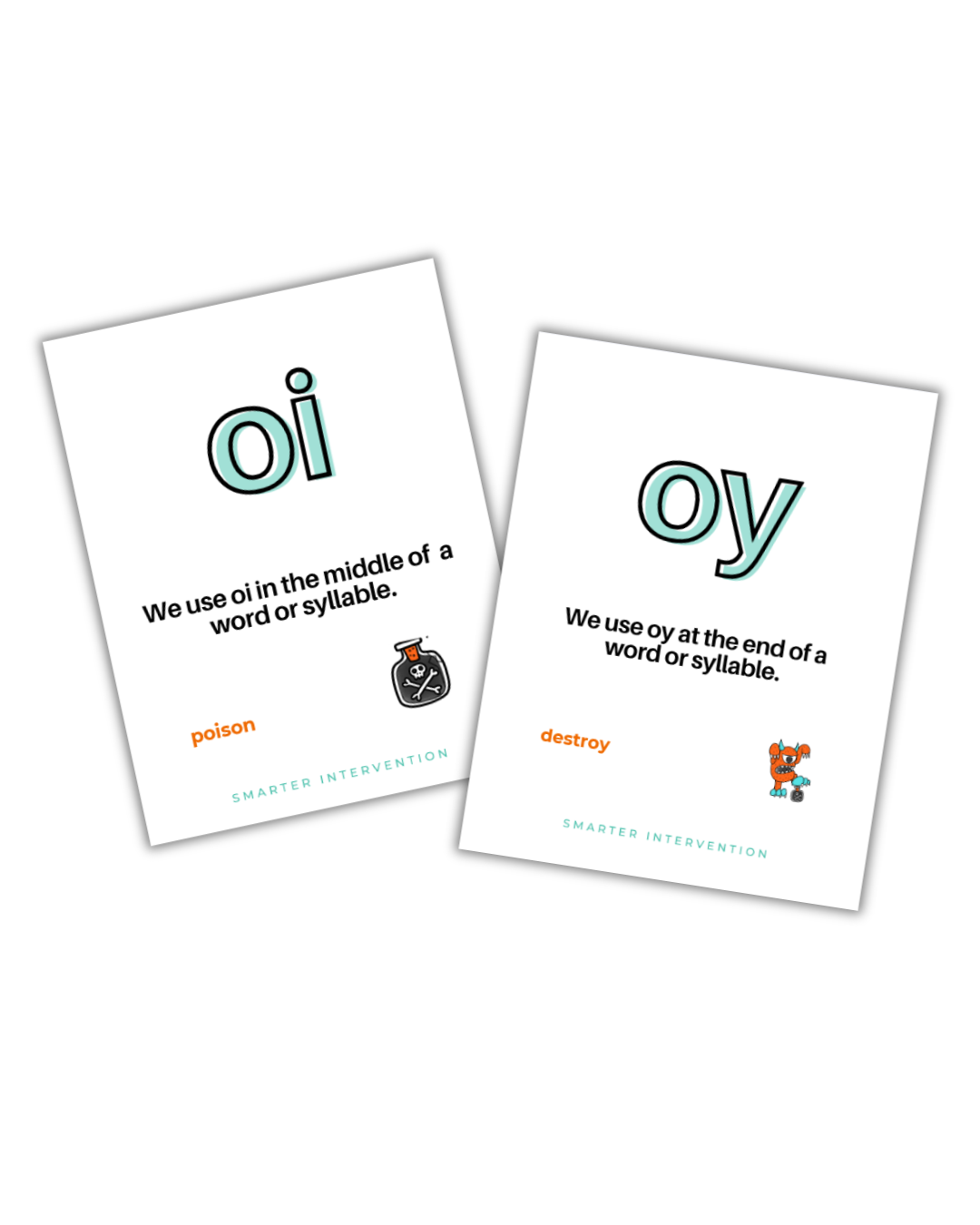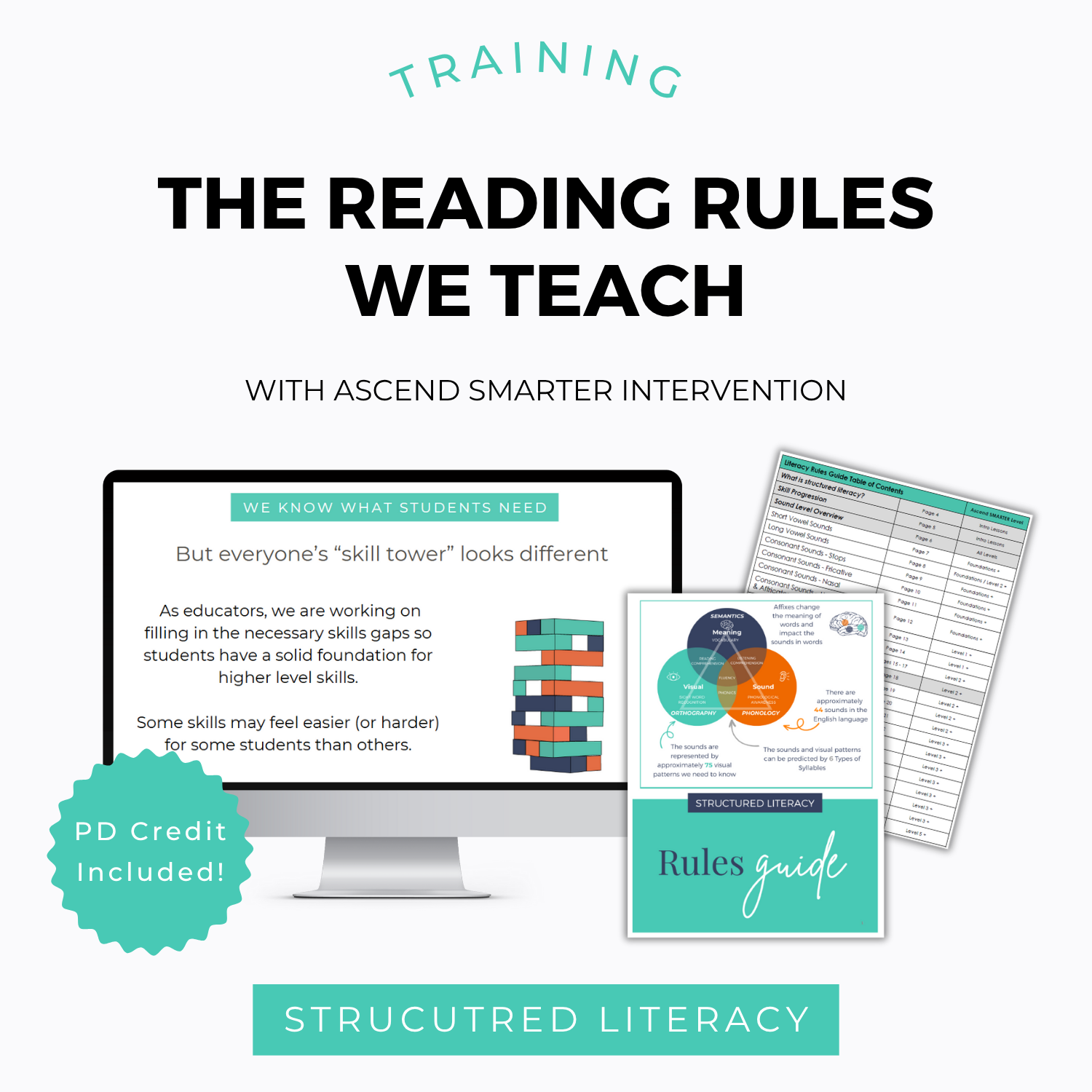How to Teach the oi/oy Spelling Rule
Why It Matters
The /oi/ sound is common in English (think foil, boy, join), but spelling consistently? That’s the challenge. Helping students understand when to use oi versus oy transforms guessing into confident spelling. Anchoring the rule makes writing more predictable and a lot less frustrating.
What Is the oi/oy Rule?
OI and OY are vowel diphthongs, which occur when two vowels work together to create a sliding sound (e.g., boy, join, trout). In diphthongs, one vowel sound slides into another. For example, in the word “boy,” we hear an /O/ sliding into an /E/. In the word “join,” we also hear an /O/ sliding into an /E/.
Both oi and oy make the /oi/ sound:
OI usually appears in the middle of a syllable or word (e.g., foil, join, coin)
OY typically appears at the end of a word or syllable (e.g., boy, destroy, toy)
A simple, memorable keyword phrase, like “Destroy the Poison” 💥☠️, can cement the pattern, with a visual to match, helping students recall that poison (middle) uses oi, while destroy (end) uses oy.
How We Teach the oi/oy Spelling Pattern
We teach spelling by starting with sound and moving to structured application through writing.
1. Teach the Sound in Isolation
Begin by helping students clearly hear the /oi/ sound and its two spellings:
OI = /oi/ in the middle (e.g., coin, join)
OY = /oi/ at the end (e.g., boy, toy)
Get students saying, listening, and noticing where the sound falls.
2. Connect to Syllable Structure & Spelling Options
Explain that oi and oy are vowel teams - two vowels working as one sound:
OI in vowel team syllables that appear in the middle
OY at the end of words or syllables
With frequency in mind, highlight that words using oi in the middle are more common, but position still wins the day.
3. Practice at the Word Level
Use sorting and visuals to reinforce the rule:
Sort words by where the sound appears (middle vs. end)
Compare spellings and meaning (e.g., join vs. toy)
Lean on the “Destroy the Poison” anchor phrase with illustrations to make it sticky.
4. Practice at the Sentence Level
Invite students to use both oi and oy words in creative sentences:
Sentence-building: “The boy will destroy the poison.”
Sentence Combining: Combine two sentences using target words for richer context
Sentence Dictation: Hear and write sentences like, “They destroy the foil in the soil.”
This bridges spelling from isolated practice into real communication.
5. Extend to Paragraph Writing
For ready writers, transition into short paragraphs or stories using oi/oy words:
Example prompt: “Write a story about a toy that will ‘destroy the poison’ in a fairy tale forest.”
This encourages confident application and helps reveal where understanding is solid or still shaky.
Where Students Might Get Stuck & How to Support
Students often:
Use oi at the end (e.g., “boi” instead of “boy”)
Use oy in the middle (e.g., “joiyn” instead of “join”)
To support mastery:
Lean on the “Destroy the Poison” anchor, constantly reinforce sound + placement
Use visuals, word sorts, and multi-sensory tools (say it, write it, see it)
Embed the rule across reading and writing opportunities to build familiarity
Looking to teach oi & oy in your lessons?
Grab our Free Phonics Rules Posters! They’re perfect for hanging in your classroom or using as a quick reference when introducing a new pattern (not only will you get the oi & oy patterns, but tons of other patterns we teach too!).
Download Phonics Rules Posters » Get them here!
Want to see how we teach all the rules?
Check out our Spotlight PD: The Reading Rules We Teach (and Why They Matter!)
This 1-hour on-demand training provides you with everything you need to help you confidently teach the rules that actually move the needle, without getting lost in all the complexity.
You’ll get a clear, research-backed framework that shows which reading rules to focus on, why they matter for the brain, and how to teach them at each level—sound, syllable, word, sentence, paragraph, and passage.





